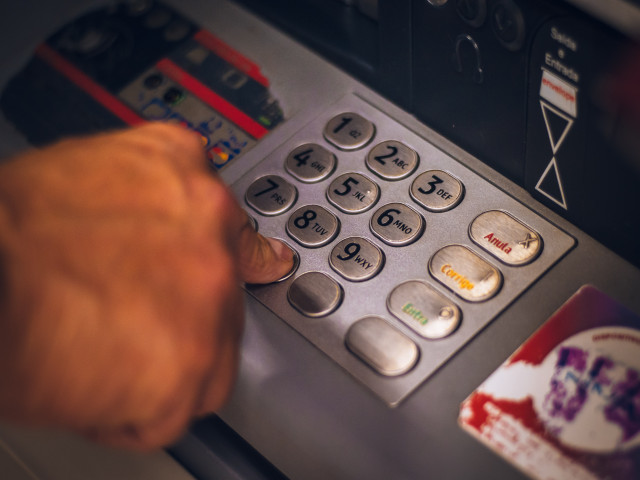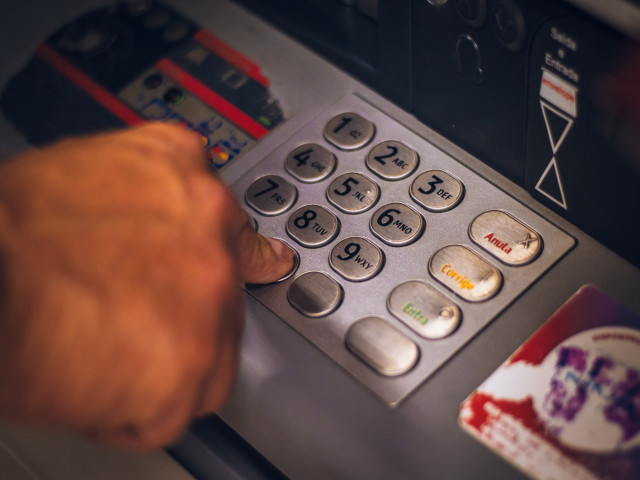17 Jan 2024
The Rise of Cryptocurrency: How Digital Assets are Transforming Money Transfers

Introduction
In an era dominated by technological advancements, the financial landscape is undergoing a revolutionary transformation with the rise of cryptocurrencies. These digital assets, decentralized and powered by blockchain technology, have emerged as a disruptive force in the realm of money transfers. As traditional financial systems face challenges, cryptocurrency is paving the way for a new paradigm in the way we perceive and conduct transactions. This blog post explores the profound impact of digital assets on money transfers and how they are reshaping the future of finance.
Brief Explanation of Cryptocurrency and Blockchain
Cryptocurrency, a revolutionary digital currency, has disrupted traditional financial systems, offering decentralized and secure transactions. Unlike traditional currencies issued by governments, cryptocurrencies operate on a technology called blockchain. A blockchain is essentially a decentralized ledger that records all transactions across a network of computers. The most well-known cryptocurrency is Bitcoin, but there are numerous others like Ethereum, Ripple, and Litecoin.
Cryptocurrencies leverage cryptography to secure transactions, control the creation of new units, and verify the transfer of assets. Blockchain serves as the underlying technology for these digital currencies, providing a transparent and tamper-resistant system. When a cryptocurrency transaction occurs, it is added to a block, which is then linked to the previous block in a chronological chain. This decentralized and distributed nature of blockchain eliminates the need for intermediaries like banks, fostering a peer-to-peer financial ecosystem.
How Blockchain Ensures Security and Transparency in Transactions
Blockchain technology ensures security and transparency through its decentralized and consensus-driven model. Each transaction is recorded on a block, and once added, it cannot be altered retroactively without altering all subsequent blocks. This immutability makes blockchain highly resistant to fraud and tampering.
Moreover, transactions on the blockchain require consensus from the majority of participants in the network before they are considered valid. This decentralized validation process enhances security by preventing a single point of failure or manipulation. It's a collaborative approach that relies on a network of nodes, each maintaining a copy of the blockchain, to validate and verify transactions.
The transparency in blockchain transactions comes from the public nature of the ledger. Anyone in the network can view the entire history of transactions, providing a level of accountability and traceability that traditional financial systems often lack. This transparency not only builds trust but also acts as a deterrent against fraudulent activities.
High Transaction Fees and Slow Processing Times
Traditional money transfer systems, characterized by brick-and-mortar banks and established financial institutions, often come with a significant drawback—exorbitant transaction fees and sluggish processing times. These fees can take a considerable bite out of the amount being transferred, especially when sending money internationally. Moreover, the extended processing times can be frustrating for both the sender and the recipient, causing delays in urgent financial transactions. This inefficiency is a glaring flaw that modern financial solutions aim to address, seeking to provide users with faster and more cost-effective alternatives.
In the era of rapid technological advancement, the shortcomings of traditional systems have become more apparent. Emerging financial technologies and digital solutions are stepping in to streamline the money transfer process, offering users the benefits of reduced fees and accelerated transaction speeds. As consumers increasingly seek efficiency and affordability, the traditional money transfer landscape faces the challenge of adapting to these evolving expectations.
Geographical Limitations and Accessibility Issues
Another notable flaw in traditional money transfer systems lies in their geographical limitations and accessibility issues. Traditional banks often require users to physically visit their branches or ATMs, posing a considerable inconvenience, especially for those in remote areas or with limited mobility. This restriction becomes even more apparent when dealing with international transfers, where individuals may encounter difficulties accessing the necessary financial services.
The advent of digital and mobile banking, along with the rise of fintech innovations, has significantly addressed these issues. Online platforms and mobile apps have dismantled geographical barriers, allowing users to initiate money transfers from the comfort of their homes. This enhanced accessibility caters to the needs of a broader demographic, ensuring that financial services are not exclusive to urban centers. As a result, traditional money transfer systems face the imperative to modernize their approach to remain competitive in an increasingly digital financial landscape.
Cryptocurrency as a Solution
In the ever-evolving landscape of finance and technology, cryptocurrencies have emerged as a groundbreaking solution to address some of the longstanding challenges in traditional financial systems. This section explores two key advantages of cryptocurrencies: low transaction costs and rapid transaction processing.
Low Transaction Costs and Rapid Transaction Processing
One of the inherent strengths of cryptocurrencies lies in their ability to facilitate transactions at significantly lower costs compared to traditional banking methods. Traditional financial transactions often involve intermediary institutions, each imposing fees that can accumulate and become a burden for users. Cryptocurrencies, however, operate on decentralized networks, eliminating the need for intermediaries and reducing associated costs.
Moreover, the decentralized nature of cryptocurrencies ensures that transactions occur directly between users, enhancing the speed of processing. Traditional financial transactions, particularly cross-border payments, can take days to complete due to various intermediaries and regulatory processes. Cryptocurrencies, on the other hand, enable near-instantaneous transactions, making them an attractive solution for those seeking efficiency and speed in their financial dealings.
Inclusion and Accessibility for the Unbanked and Underbanked Populations
Cryptocurrencies have the potential to bridge the gap between the banked and the unbanked or underbanked populations. A significant portion of the global population lacks access to traditional banking services, excluding them from participating in the formal economy. Cryptocurrencies provide a decentralized and inclusive alternative, allowing individuals without access to traditional banking infrastructure to engage in financial transactions.
The unbanked and underbanked populations can benefit from the simplicity and accessibility of cryptocurrency transactions. All that's needed is a digital wallet, which can be easily obtained, providing a gateway to a range of financial services. This democratization of financial access aligns with the ethos of decentralization, empowering individuals who were previously excluded from mainstream financial systems.
Global Reach and Borderless Transactions
Cryptocurrency has emerged as a game-changer in the realm of global finance, offering unparalleled potential for seamless international money transfers. Unlike traditional banking systems, which often involve multiple intermediaries and are subject to delays, cryptocurrencies operate on decentralized networks, enabling direct peer-to-peer transactions across borders. This global reach eliminates the need for intermediaries, providing users with a faster and more cost-effective means of transferring funds.
Cryptocurrencies, such as Bitcoin and Ethereum, function on blockchain technology, a decentralized and distributed ledger. This ensures that transactions are verified and recorded transparently without the need for a central authority. The decentralized nature of cryptocurrencies empowers users to conduct transactions with anyone, anywhere in the world, transcending the limitations of traditional banking hours and geographical boundaries.
Overcoming the Challenges of Currency Exchange and Cross-Border Regulations
One of the significant advantages of cryptocurrency is its ability to mitigate the challenges associated with currency exchange. Traditional international money transfers often incur hefty fees due to the involvement of multiple banks and currency conversion processes. Cryptocurrencies, on the other hand, operate on a unified and global platform, reducing the need for intermediaries and associated fees. This makes cross-border transactions more cost-effective for users, as they can avoid the additional costs typically associated with currency conversion.
Moreover, cryptocurrencies offer a solution to the complexities of cross-border regulations. Traditional financial systems are subject to various regulatory frameworks across different countries, leading to delays and complications in international transactions. Cryptocurrencies, being decentralized and borderless, transcend these regulatory hurdles. Users can execute transactions without being impeded by the intricacies of diverse financial regulations, resulting in a more efficient and streamlined process.

The Role of Decentralization in Financial Inclusion
Decentralization emerges as a powerful force reshaping the landscape of financial inclusion, liberating individuals from the constraints of traditional banking systems. Traditional financial institutions often impose barriers, excluding large segments of the global population from accessing basic financial services. Decentralization, facilitated by technologies such as blockchain, empowers individuals by providing them with direct control over their finances. This shift eliminates the need for intermediaries, enabling faster and more inclusive financial transactions. The transparency and security inherent in decentralized systems contribute to building trust, fostering financial inclusion for the unbanked and underbanked populations worldwide.
Cryptocurrency Projects Focused on Fostering Financial Inclusion
In the realm of decentralized finance (DeFi), various cryptocurrency projects are championing the cause of financial inclusion. These projects leverage blockchain technology to create accessible and efficient financial solutions. For instance, microfinance platforms powered by cryptocurrencies enable individuals with limited access to traditional banking to secure loans, start businesses, and build financial independence. Cryptocurrencies like Bitcoin and Ethereum serve as borderless and censorship-resistant forms of money, transcending geographical constraints and providing financial autonomy to users globally. Moreover, decentralized lending and borrowing platforms offer an alternative to traditional banking, where interest rates and access criteria often disadvantage those in need.
As the world increasingly embraces digital currencies and blockchain technology, the potential for decentralized finance to drive financial inclusion becomes even more pronounced. The synergy between decentralization and financial inclusion represents a transformative force, challenging established norms and fostering a more inclusive global financial ecosystem. Through these decentralized innovations, individuals gain not only financial services but also a pathway to economic empowerment, creating a more equitable and accessible financial landscape for everyone.
Regulatory Uncertainties and Legal Challenges
The cryptocurrency space is marked by a dynamic landscape that often grapples with regulatory uncertainties and legal challenges. Governments around the world are continually adapting to the emergence of cryptocurrencies, leading to a lack of standardized regulations. This lack of regulatory clarity raises concerns for both investors and industry participants. Regulatory uncertainty can result in ambiguous compliance requirements, making it challenging for businesses to navigate the legal landscape. The absence of a consistent regulatory framework can also contribute to the prevalence of fraudulent activities, as bad actors may exploit regulatory gaps. As the cryptocurrency market matures, establishing clear and comprehensive regulations will be crucial for fostering a secure and transparent environment that encourages responsible innovation.
Volatility and Risk Factors Associated with Cryptocurrency Investments
The inherent volatility of cryptocurrencies is a key concern for investors venturing into this space. Unlike traditional financial markets, cryptocurrencies can experience significant price fluctuations within short timeframes. While volatility presents opportunities for profit, it also amplifies the risks associated with investments. Factors such as market sentiment, regulatory developments, and technological advancements can trigger rapid and unpredictable price movements. Investors must be prepared for the potential of substantial losses, as the value of cryptocurrencies can be susceptible to external influences. Risk management strategies, thorough research, and staying informed about market dynamics become imperative for those engaging in cryptocurrency investments. As the market matures, efforts to stabilize and mitigate volatility will play a crucial role in attracting a broader investor base and establishing cryptocurrencies as a reliable asset class.
FAQs
Q. How do cryptocurrency transactions work?
A. Cryptocurrency transactions involve cryptographic processes, where a sender initiates a transfer, which is verified by miners and recorded on the blockchain. This ensures secure and transparent transactions.
Q. Is cryptocurrency a safe medium for money transfers?
A. Cryptocurrency transactions are inherently secure due to cryptographic principles and blockchain technology. However, users must follow best practices, such as secure wallet management, to enhance safety.
Q. What role does blockchain play in securing transactions?
A. Blockchain ensures transaction security by recording them in a decentralized and immutable ledger. This transparent and tamper-resistant system adds a layer of security to cryptocurrency transactions.
Q. How does cryptocurrency address cross-border transaction challenges?
A. Cryptocurrencies overcome cross-border challenges by eliminating intermediaries, reducing transaction time, and providing a universal and accessible financial platform.
Q. What are the risks associated with cryptocurrency volatility?
A. Cryptocurrency values can be volatile, presenting both investment opportunities and risks. Users and investors should be aware of market dynamics and employ risk mitigation strategies.
Q. Are governments adopting or resisting cryptocurrency for money transfers?
A. Governments worldwide exhibit varied stances on cryptocurrency adoption. While some embrace digital currencies, others remain cautious, leading to a diverse global regulatory landscape.
Conclusion
In conclusion, the rise of cryptocurrency marks a pivotal moment in the evolution of financial systems worldwide. As digital assets continue to gain momentum, the flaws of traditional money transfer systems are being exposed, and new solutions are emerging. Cryptocurrencies offer not only efficiency and cost-effectiveness but also a path towards financial inclusion for individuals who have been marginalized by traditional banking structures. While challenges persist, the growing adoption and industry developments indicate that cryptocurrencies are here to stay, transforming the way we transfer money and challenging the very foundations of traditional finance. As we navigate this dynamic landscape, it becomes increasingly clear that the future of money transfers lies in the decentralized and borderless realm of digital assets.
UP NEXT
https://dollardirect.cc/blog/navigating-the-future-trends-and-innovations-in-money-transfer-services/150














